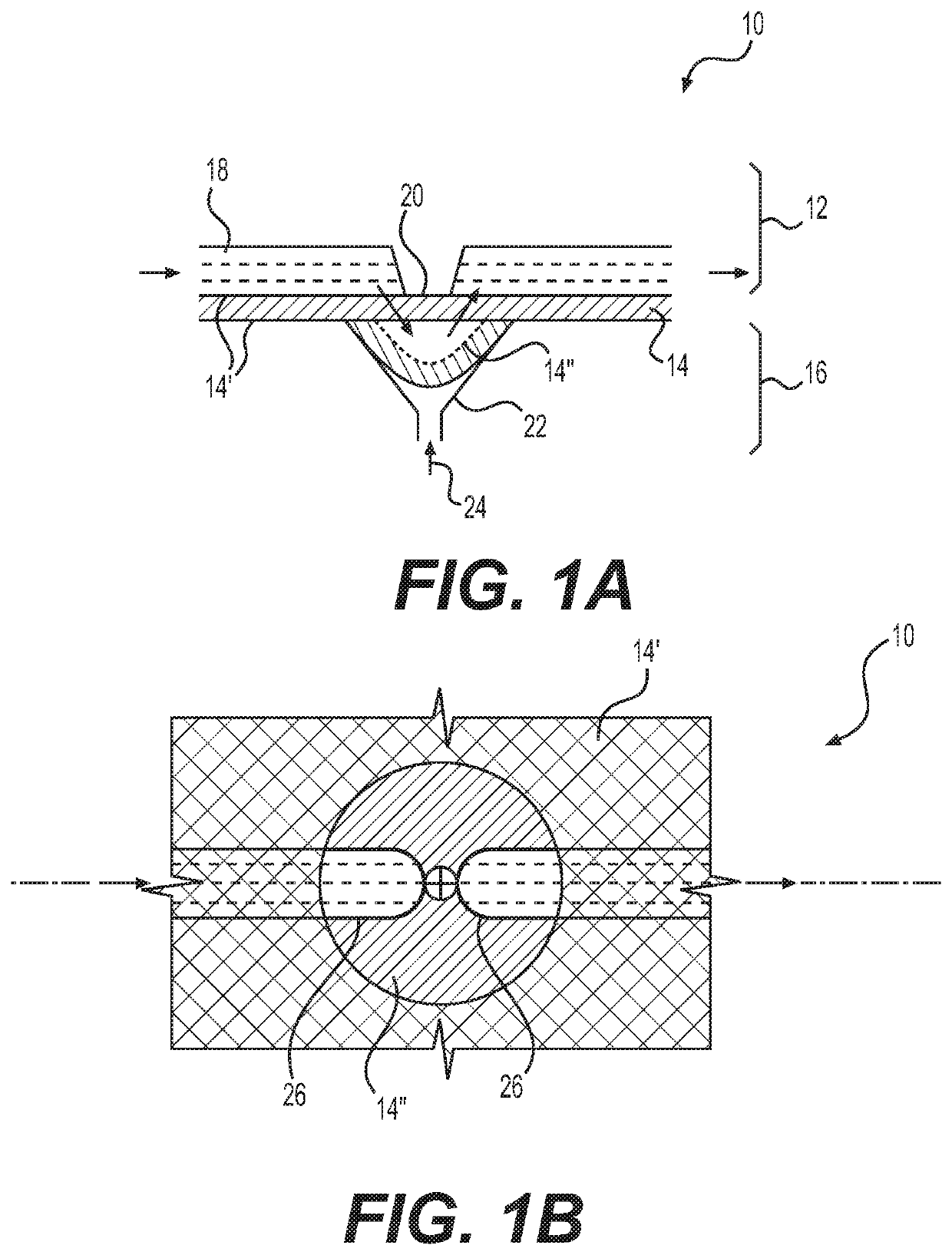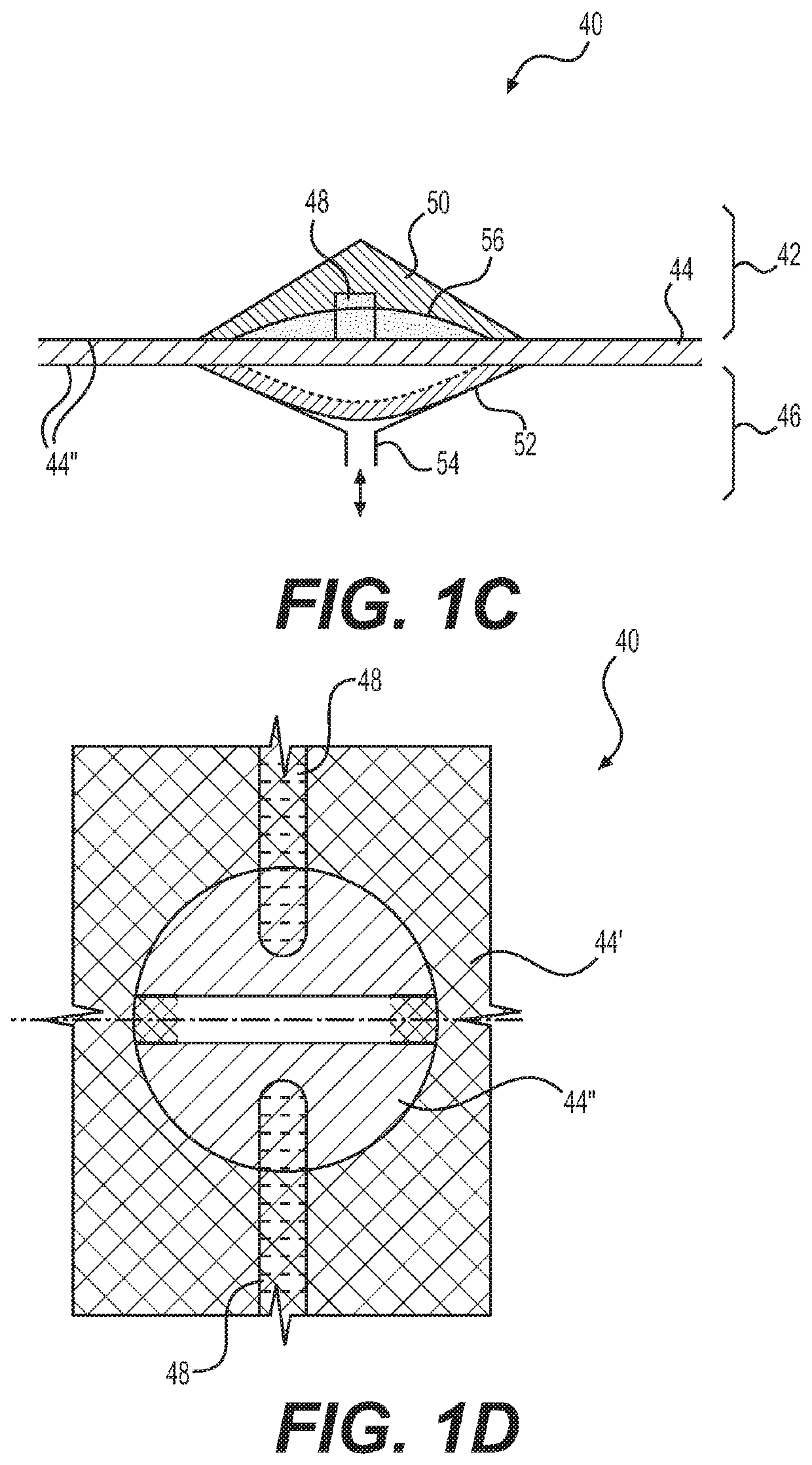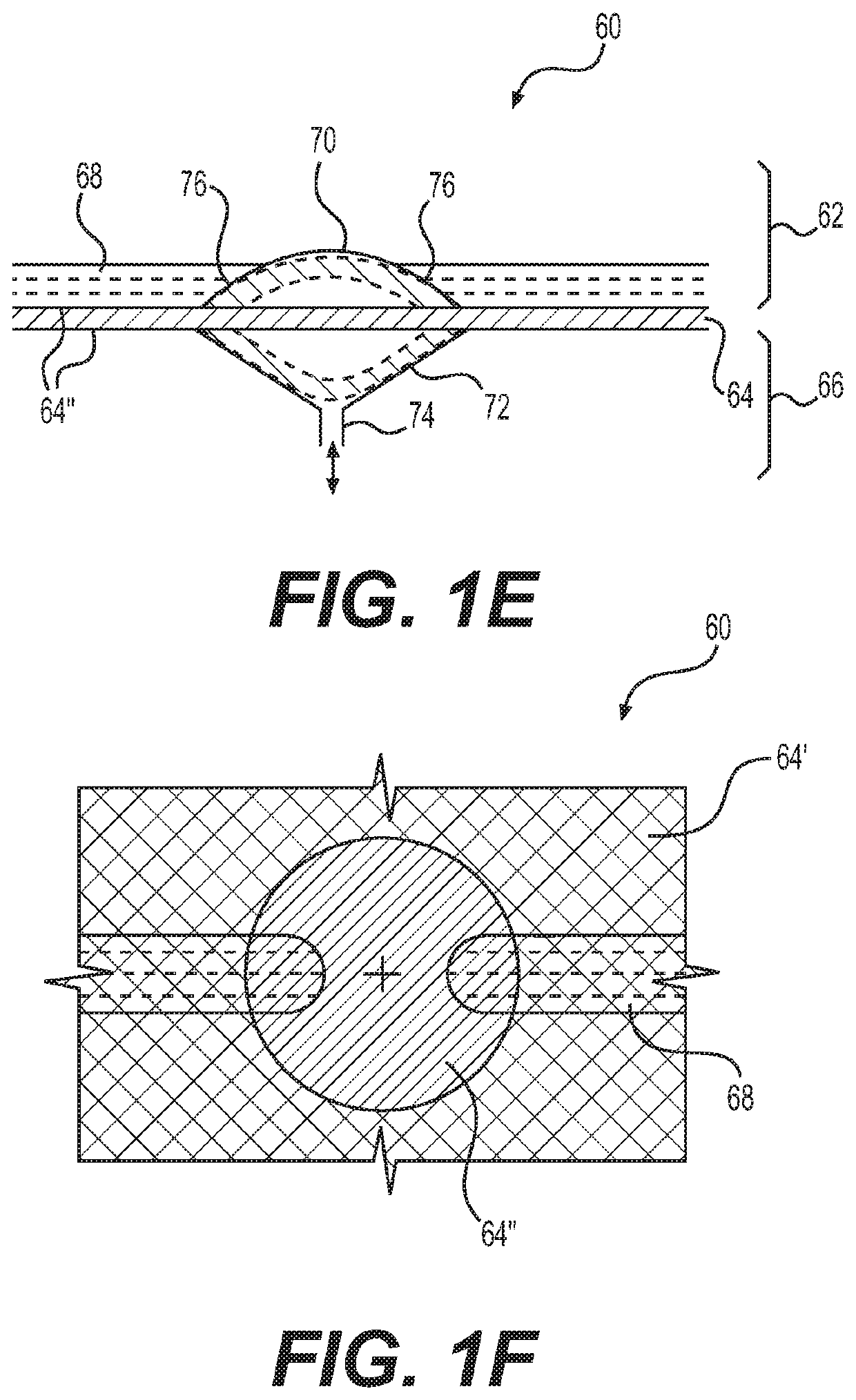Pumps and hardware for organ-on-chip platforms
a chip platform and pump technology, applied in the field of microfluidic devices, can solve the problems of lack of clinical efficacy, toxicity, limited pharmacokinetic studies in multi-mps platforms, etc., and achieve the effects of maintaining fluidic sterility, low energy consumption, and constant displacement strok
- Summary
- Abstract
- Description
- Claims
- Application Information
AI Technical Summary
Benefits of technology
Problems solved by technology
Method used
Image
Examples
example 1
Polymer Materials and Chamber Geometries for Forming a Micro-Pump
[0300]Generally, polymer manufacturing is a variable process in which it is challenging to achieve tight consistency in the composition at reasonable prices, especially for low volume manufacturing. In the existing pumps, polyurethane (PU) diaphragms were used, the physical properties of which were found to be varying stock to stock for the same specification, from the same manufacturer.
[0301]Therefore, based on the recommendation by the supplier, a larger lot quantity was purchased and was used to cut the diaphragms for the platforms to maintain assembly to assembly consistency.
[0302]It is important to limit the working range to within the linear elastic regime of the diaphragm material so that the diaphragm returns back to its initial position every actuation. Otherwise, if the material yields, it will have some permanent deformation set into the diaphragm which will cause it to slack leading to non-deterministic vol...
example 2
and Testing the Deflection Behavior of Diaphragms
[0308]Materials and Methods
[0309]A model may be used to predict the diaphragm deflection for a given pressure difference across it, with a bonded (fully clamped) boundary condition at the edges. Then the pressure at which the diaphragm makes contact with the wall for the pumps and valves can be predicted. Diaphragm deflections can be categorized into three categories.
[0310]The thickness of the diaphragm is fixed (0.065-0.075 mm), the range of deflection depths (0.075-0.150 mm) is fixed and the range of pressures is also fixed (±20-±100 kPa(g)). Therefore, the problem is to find the feasible range of diameters which will work for these parameters. The diaphragm parameters used for modeling are given in Table 6.
TABLE 6Diaphragm physical parameters used for modeling. Detailsof measurement of measured values are given in Example 3.ParameterSymbolValueUnitsYoung's modulusE1300-1500MPa(measured)DensityP940kg / m3Poisson's ratioν0.41—Yield str...
example 3
nt of Uni-Axial Young's Modulus of the COC Diaphragm and the Volume Displaced Vs. Actuation Pressure
[0333]Materials and Methods
[0334]The physical parameters of the diaphragm were acquired. Since the physical properties such as Young's modulus and the yield stress can have a large variation manufacturing lot-to-lot, these properties were measured. The Young's modulus of the diaphragm was measured as per the ASTM D882-12 standard (ASTM International, “ASTM D882: Standard Test Method for Tensile Properties of Thin Plastic Sheeting,” p. 12, 2012). The Young's modulus was measured for multiple trials and found to be in the range of 1300-1500 MPa. FIGS. 19A and 19B show the plots of data obtained for one of the tests. FIG. 19A shows calculation of Young's modulus with a linear fit line for the linear regime. The slope is the Young's modulus and the value is found to be 1322 MPa. In the regions of lower strain, the slope is slightly higher with a maximum value of 1500 MPa. Thus, the Young'...
PUM
| Property | Measurement | Unit |
|---|---|---|
| diameters | aaaaa | aaaaa |
| pressure | aaaaa | aaaaa |
| stress-strain curve | aaaaa | aaaaa |
Abstract
Description
Claims
Application Information
 Login to View More
Login to View More - R&D
- Intellectual Property
- Life Sciences
- Materials
- Tech Scout
- Unparalleled Data Quality
- Higher Quality Content
- 60% Fewer Hallucinations
Browse by: Latest US Patents, China's latest patents, Technical Efficacy Thesaurus, Application Domain, Technology Topic, Popular Technical Reports.
© 2025 PatSnap. All rights reserved.Legal|Privacy policy|Modern Slavery Act Transparency Statement|Sitemap|About US| Contact US: help@patsnap.com



